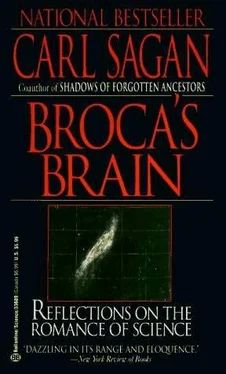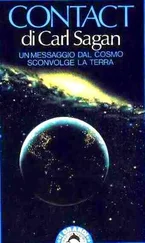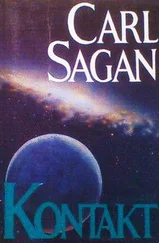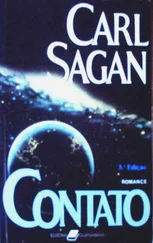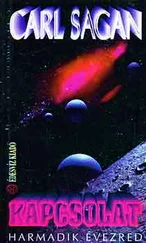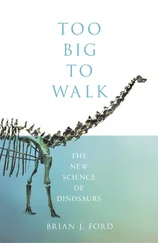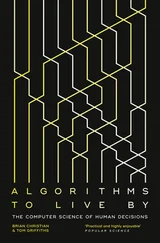Carl Sagan - Broca's Brain - The Romance of Science
Здесь есть возможность читать онлайн «Carl Sagan - Broca's Brain - The Romance of Science» весь текст электронной книги совершенно бесплатно (целиком полную версию без сокращений). В некоторых случаях можно слушать аудио, скачать через торрент в формате fb2 и присутствует краткое содержание. Жанр: Физика, на английском языке. Описание произведения, (предисловие) а так же отзывы посетителей доступны на портале библиотеки ЛибКат.
- Название:Broca's Brain: The Romance of Science
- Автор:
- Жанр:
- Год:неизвестен
- ISBN:нет данных
- Рейтинг книги:3 / 5. Голосов: 1
-
Избранное:Добавить в избранное
- Отзывы:
-
Ваша оценка:
- 60
- 1
- 2
- 3
- 4
- 5
Broca's Brain: The Romance of Science: краткое содержание, описание и аннотация
Предлагаем к чтению аннотацию, описание, краткое содержание или предисловие (зависит от того, что написал сам автор книги «Broca's Brain: The Romance of Science»). Если вы не нашли необходимую информацию о книге — напишите в комментариях, мы постараемся отыскать её.
Broca's Brain: The Romance of Science — читать онлайн бесплатно полную книгу (весь текст) целиком
Ниже представлен текст книги, разбитый по страницам. Система сохранения места последней прочитанной страницы, позволяет с удобством читать онлайн бесплатно книгу «Broca's Brain: The Romance of Science», без необходимости каждый раз заново искать на чём Вы остановились. Поставьте закладку, и сможете в любой момент перейти на страницу, на которой закончили чтение.
Интервал:
Закладка:
But there are many more cultures on the planet Earth-even ones with identifiable astronomical traditions-than are represented by any such list of individual names. In an attempt to offset at least in part this implicit cultural bias, a suggestion of mine was accepted to call the sinuous valleys after the names of Mars in other, largely non-European languages. On this page is a table of the most prominent. By a curious coincidence Ma’adim (Hebrew) and Al Qahira (Arabic: the war god after whom Cairo is named) are cheek by jowl. The landing site for the first Viking spacecraft was in Chryse, near the confluence of the Ares, Tiu, Simud and Shalbatana valleys.
TABLE 1
Name : Language
Al Qabira:Egyptian Arabic
Ares:Greek
Auqakuh:Quechua (Inca)
Huo Hsing:Chinese
Ma’adim:Hebrew
Mangala:Sanskrit
Nirgal:Babylonian
Kasei:Japanese
Shalbatana:Akkadian
Simud:Sumerian
Tiu:Old English
For the massive Martian volcanoes, one suggestion was to name them after major terrestrial volcanoes, such as Ngorongoro or Krakatoa, which would permit some appearance on Mars of cultures with no written astronomical tradition. But this was objected to on the ground that there would be confusion when comparing terrestrial and Martian volcanoes: Which Ngorongoro are we talking about? The same potential problem exists for terrestrial cities, but we seem able to compare Portland, Oregon, with Portland, Maine, without becoming hopelessly confused. Another suggestion, made by a European savant, was to name each volcano “Mons” (mountain) followed by the name of a principal Roman deity in the appropriate Latin genitive case: thus, Mons Martes, Mons Jovis and Mons Veneris. I objected that at least the last of these had been pre-empted by quite a different field of human activity. The reply was: “Oh, I hadn’t heard.” The outcome was to name the Martian volcanoes after adjacent bright and dark markings in the classical nomenclature. We have Pavonis Mons, Elysium Mons and-satisfyingly, for the largest volcano in the solar system-Olympus Mons. Thus, while the volcano names are very much in the Western tradition, by and large the most recent Mars nomenclature represents a significant break with tradition: an important number of features have been named neither after evocations of classical times nor after European geographical features and nineteenth-century Western visual astronomers.
Some Martian and lunar craters are named after the same individuals. This is the Portland case again, and I think it will cause very little confusion in practice. It does have at least one salutary benefit: on Mars there is today a large crater named Galileo. It is about the same size as the one named Ptolemaeus. And there are no craters on Mars named Scheiner or Riccioli.
Another unexpected consequence of the Mariner 9 mission is that the first close-up photographs of the moons of another planet were obtained. Maps now exist which show about half the surface features on the two Martian moons, Phobos and Deimos (the attendants of the war god, Mars). A subcommittee on Mars satellite nomenclature which I chaired assigned craters on Phobos to astronomers who had studied the moons. A prominent crater at Phobos’ south pole is named after Asaph Hall, the discoverer of both moons. Astronomical apocrypha has it that Hall was on the verge of giving up his search for the Martian moons when he was directed by his wife to return to the telescope. He promptly discovered them and named them “fear” (Phobos) and “terror” (Deimos). Accordingly, the largest crater on Phobos was given Mrs. Hall’s maiden name, Angelina Stickney. Had the impacting object that excavated crater Stickney been any larger, it probably would have shattered Phobos.
Deimos is reserved for writers and others who were in some way involved with speculations about the moons of Mars. The two most prominent features are named after Jonathan Swift and Voltaire, who, in their speculative romances, Gulliver’s Travels and Micromégas , respectively, prefigured before the actual discovery the existence of two moons around Mars. I wanted to name a third Deimonic crater after René Magritte, the Belgian surrealist whose paintings “Le Château des Pyrénées” and “Le Sens de Réalité” pictured large rocks, suspended in the sky, of an aspect astonishingly like the two Martian moons-except for the presence in the first painting of a castle, which, so far as we know, does not surmount Phobos. The suggestion was, however, voted down as frivolous.
THIS IS THE moment in history when the features on the planets will be named forever. A crater name represents a substantial memorial: the estimated lifetime of large lunar, Martian and Mercurian craters is measured in billions of years. Because of the enormous recent increase in the number of surface features that need to be named-and also because the names of almost all dead astronomers have already been given to one or another celestial object-a new approach is needed. At the IAU meeting in Sydney, Australia, in 1973, several committees were appointed to look into questions of planetary nomenclature. One clear problem is that if craters on other planets are now named after a category other than people, we will be left with only the names of astronomers and a few others on the Moon and planets. It would be charming to name craters on, say, Mercury, after birds or butterflies, or cities or ancient vehicles of exploration and discovery. But if we accept this course, we will leave the impression on globes and maps and textbooks that we esteem only astronomers and physicists; that we care nothing for poets, composers, painters, historians, archaeologists, playwrights, mathematicians, anthropologists, sculptors, physicians, psychologists, novelists, molecular biologists, engineers and linguists. The proposal that such individuals be commemorated with unassigned lunar craters would result, say, in Dostoevsky or Mozart or Hiroshige assigned craters a tenth of a mile across, while Pitiscus is 52 miles in diameter. I do not think this would speak well for the breadth of vision and intellectual ecumenicism of the name-givers.
After a protracted debate this point of view has prevailed-in significant part due to its vigorous support by Soviet astronomers. Accordingly, the Mercury nomenclature committee, under the chairmanship of David Morrison of the University of Hawaii, has decided to name Mercurian impact craters after composers, poets and authors. Thus, major craters are named Johann Sebastian Bach, Homer and Murasaki. It is difficult for a committee of largely Western astronomers to select a group of names representative of all of world culture, and Morrison’s committee requested help from appropriate musicians and experts in comparative literature. The most vexing problem is to find, for example, the names of those who composed Han dynasty music, cast Benin bronzes, carved Kwakiutl totem poles and compiled Melanesian folk epics. But even if such information comes in slowly, there will be time: the Mariner 10 photography of Mercury, which discovered the features to be named, covered only half the surface of the planet, and it will be many years before the craters in the other hemisphere will be photographed and named.
In addition, there are a few objects on Mercury that have been recommended for other sorts of names for special purposes. The proposed 20° meridian of longitude passes through a small crater which the Mariner 10 television experimenters have suggested calling Hun Kal, the Aztec word for “twenty,” the base of Aztec arithmetic. And they have suggested calling an enormous depression, in some senses comparable to a lunar mare, the Caloris basin: Mercury is very hot. Finally, all of these names apply only to the topographic features of Mercury; the bright and dark markings, glimpsed dimly by past generations of ground-based astronomers, have not yet been mapped reliably. When they are, there will probably be new suggestions for naming them. Antoniadi proposed names for such features on Mercury, some of which-such as Solitudo Hermae Trismegisti (the solitude of Hermes, the thricegreat)-have a fine ring and perhaps will ultimately be retained.
Читать дальшеИнтервал:
Закладка:
Похожие книги на «Broca's Brain: The Romance of Science»
Представляем Вашему вниманию похожие книги на «Broca's Brain: The Romance of Science» списком для выбора. Мы отобрали схожую по названию и смыслу литературу в надежде предоставить читателям больше вариантов отыскать новые, интересные, ещё непрочитанные произведения.
Обсуждение, отзывы о книге «Broca's Brain: The Romance of Science» и просто собственные мнения читателей. Оставьте ваши комментарии, напишите, что Вы думаете о произведении, его смысле или главных героях. Укажите что конкретно понравилось, а что нет, и почему Вы так считаете.
